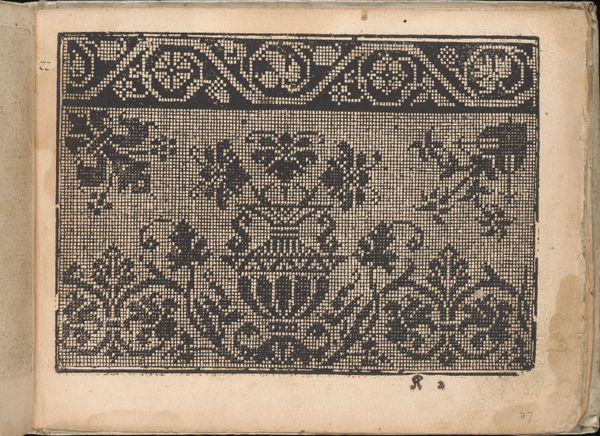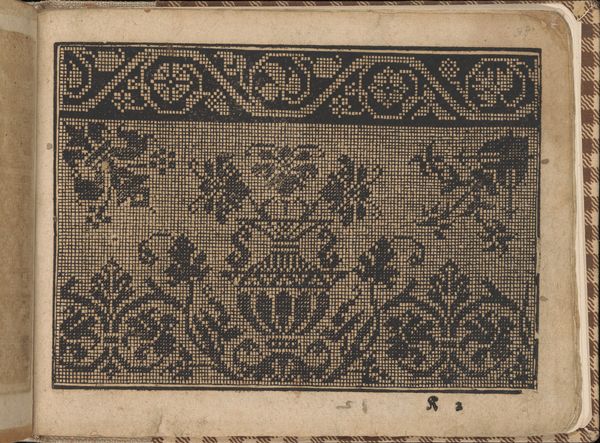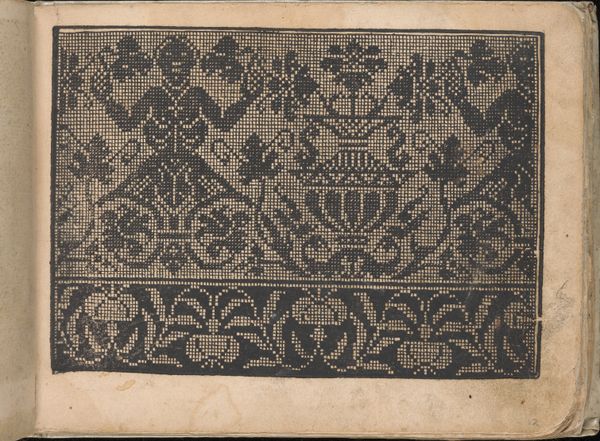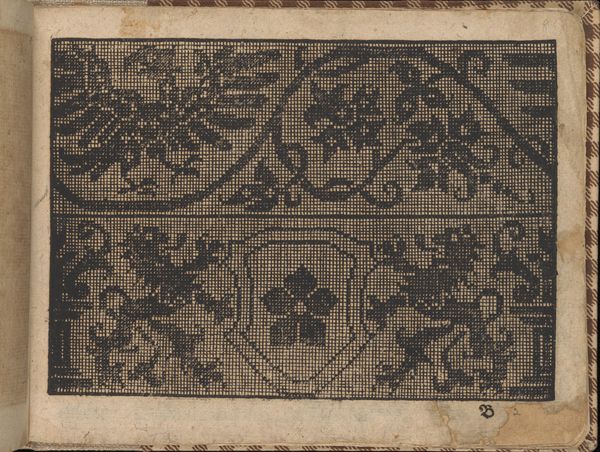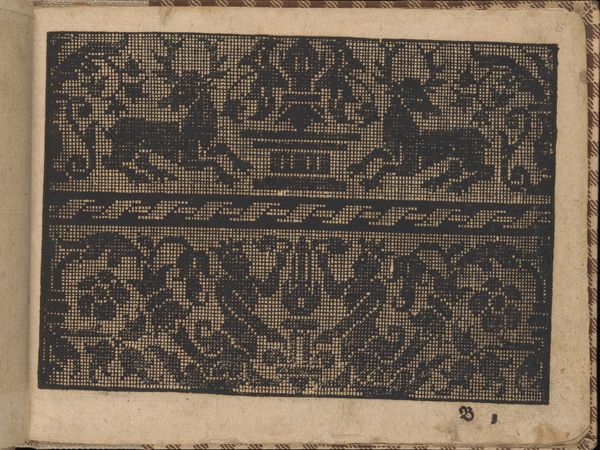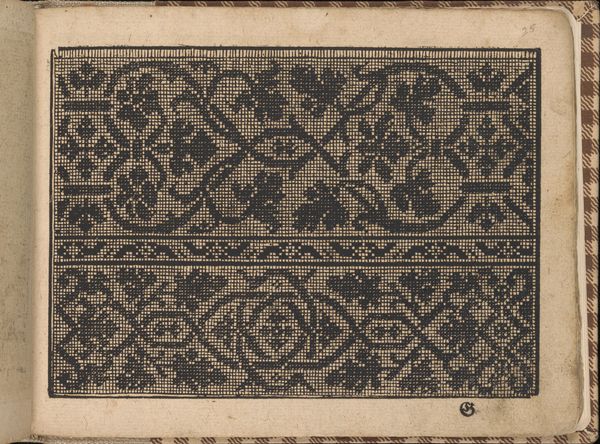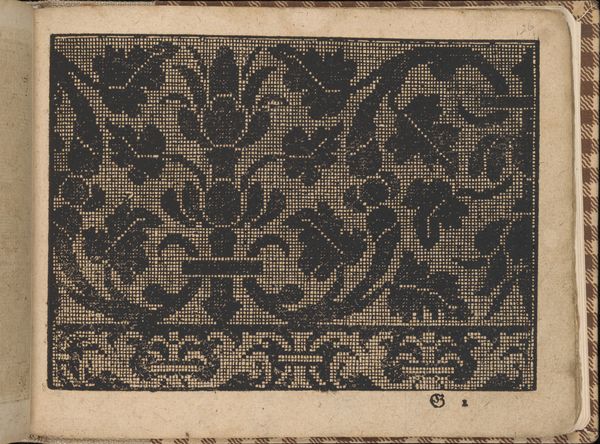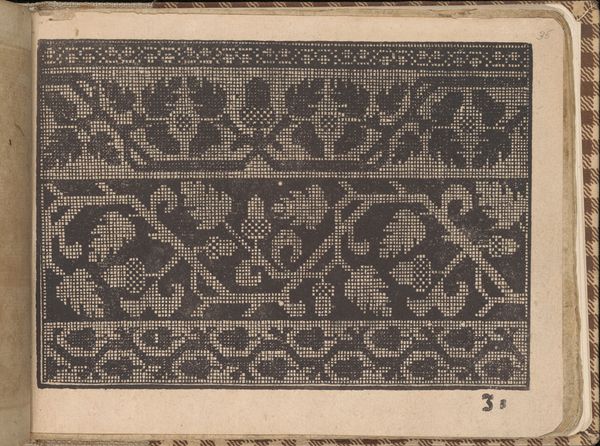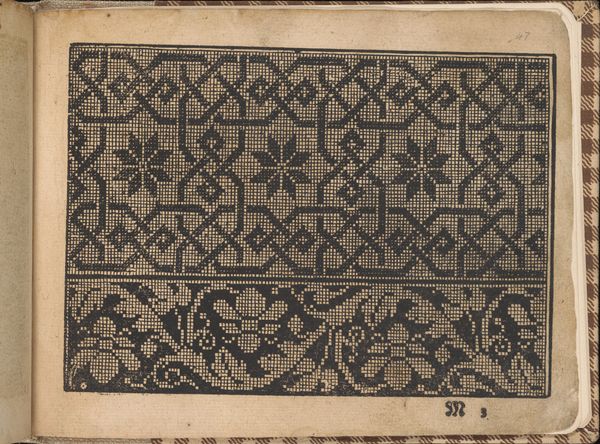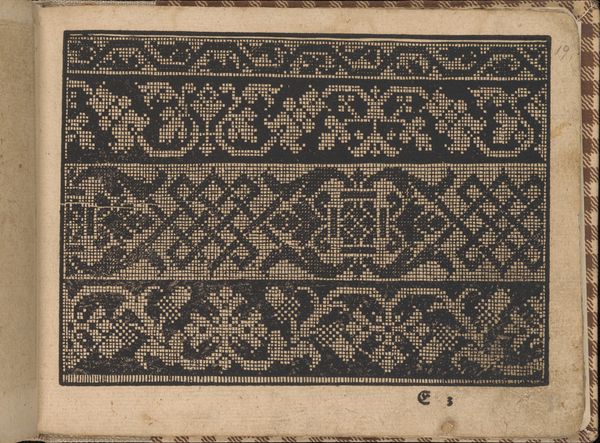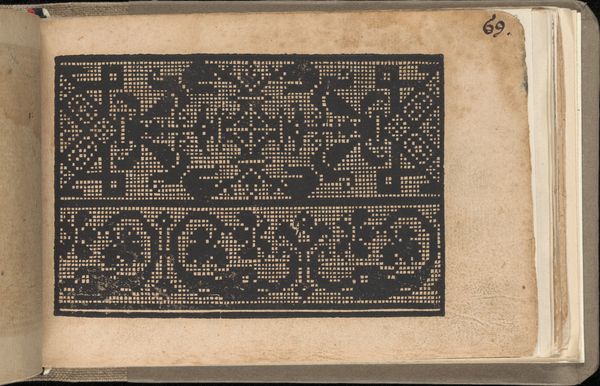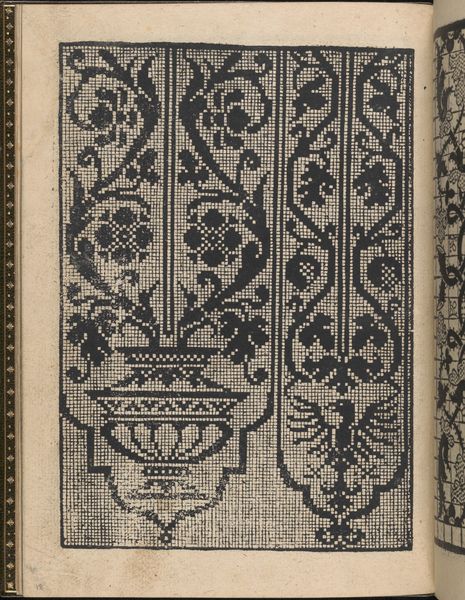
drawing, print, woodcut, engraving
#
drawing
#
natural stone pattern
#
aged paper
#
toned paper
#
ink paper printed
# print
#
book
#
pattern
#
vase
#
11_renaissance
#
geometric
#
woodcut
#
wooden texture
#
engraving
Dimensions: Overall: 6 5/16 x 8 1/4 in. (16 x 21 cm)
Copyright: Public Domain
Curator: Here we have a page from Bernhard Jobin’s “New Künstlichs Modelbuch,” created around 1600. It's a woodcut and engraving, a real testament to the artistry of printmaking during the Renaissance, currently residing at the Metropolitan Museum of Art. Editor: My first thought? It reminds me of peering through lace, or maybe a particularly intricate piece of needlepoint. There's a surprising amount of detail packed into this relatively small format. Curator: Absolutely. Jobin created this book as a model book – a source of inspiration for artisans like lacemakers and embroiderers, it had a really practical function back then. Think of it as a very stylish mood board. Editor: So, these patterns weren't just decorative, they were functional. Given the historical context, how would this accessible format have impacted gender roles and access to art, since these patterns directly facilitate typically feminine craftwork? Curator: That's precisely it. Pattern books empowered women to create and even perhaps profit from these designs. However, their artistic contributions were then viewed as craft instead of high art, influencing perception for a long time afterwards. It created a ripple effect into today's contemporary gender biases. Editor: I find myself drawn to the tension between the rigid geometric structure, the grid itself, and the more organic, flowing motifs layered on top: the vases, flowers, figures. It's like order and chaos dancing on the page. Curator: You're right, the patterns almost breathe! Consider that each of those tiny marks had to be carved, it would take tremendous care and concentration, what that really communicates is passion. Editor: Seeing how those traditional artistic boundaries were blurred allows me to appreciate these historical images for the intersectional, often marginalized context that produced them. And those pixelated flowers give it the edge of early digital art, too. Curator: Right, almost prescient, I'll never look at it in quite the same way. Editor: Likewise, thinking about it this way connects our current political climate to historical contexts.
Comments
No comments
Be the first to comment and join the conversation on the ultimate creative platform.
